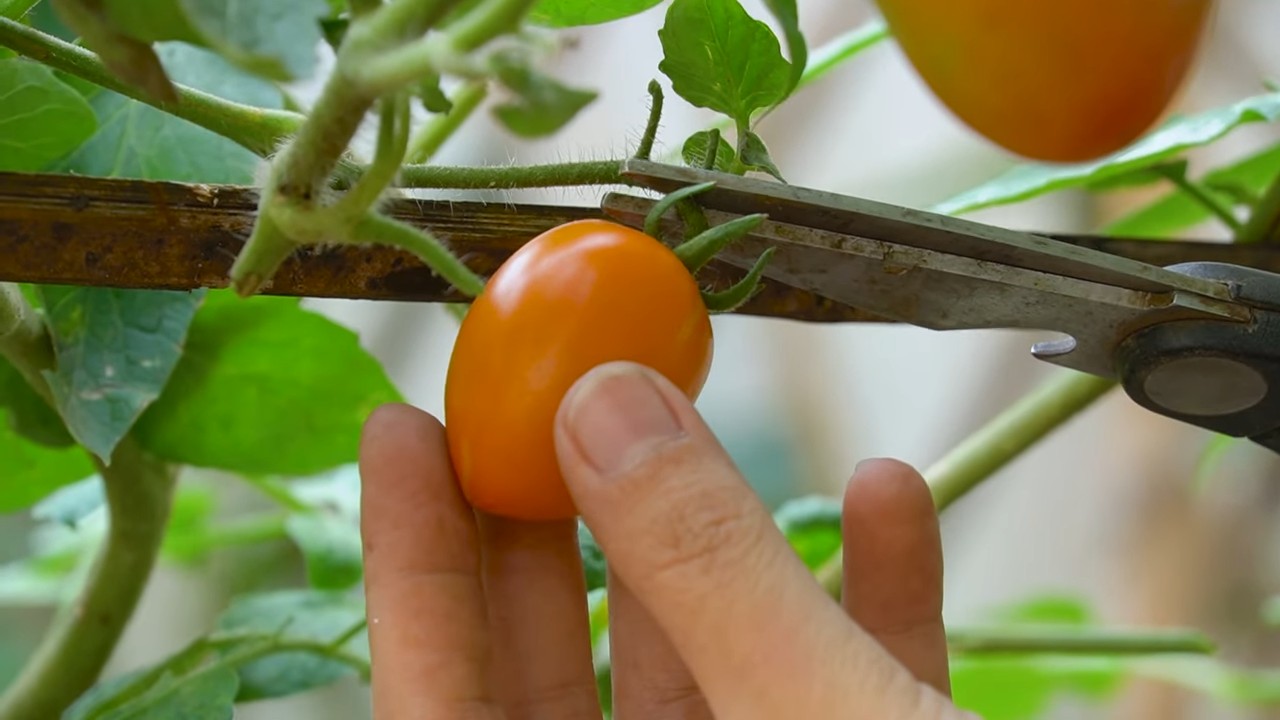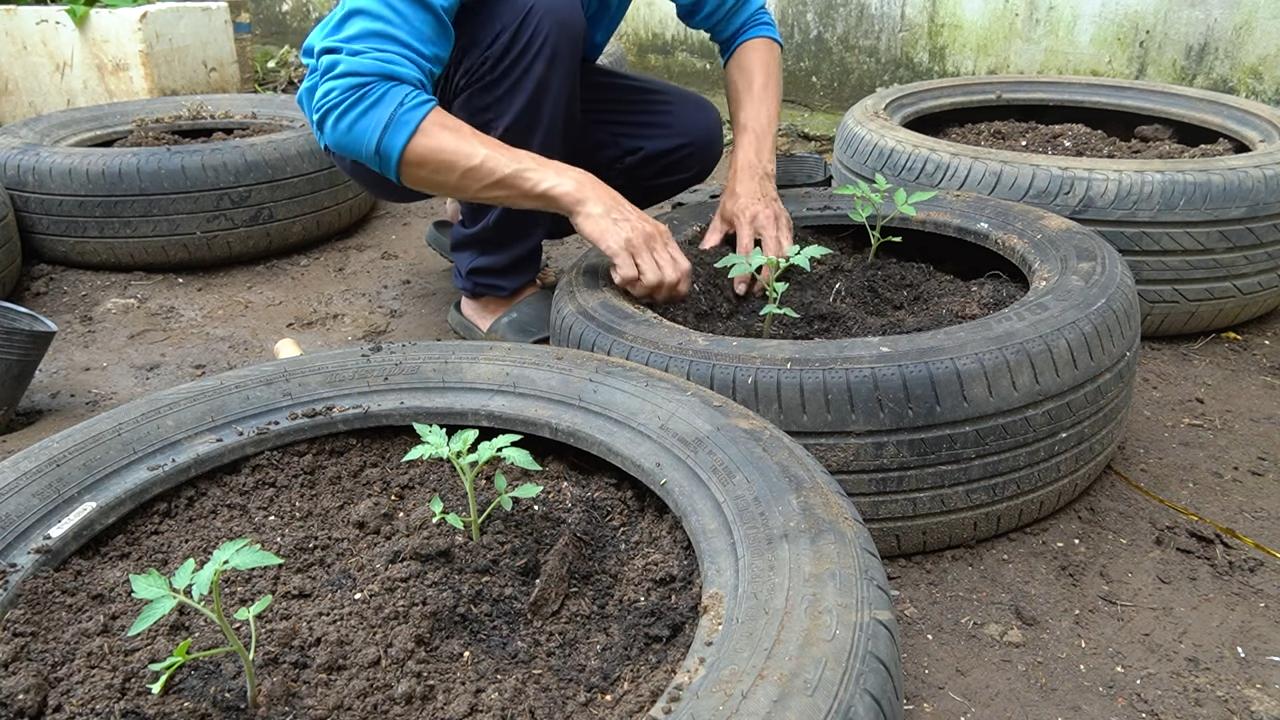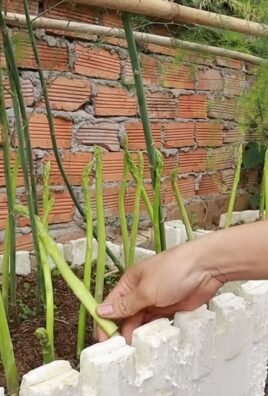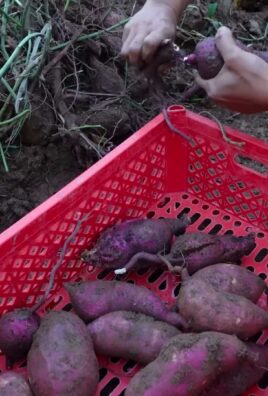Growing tomatoes at home can feel like a daunting task, right? I get it! You dream of juicy, sun-ripened tomatoes bursting with flavor, but the reality of struggling seedlings and disappointing harvests can be, well, a little disheartening. But what if I told you that with a few clever DIY tricks and hacks, you could transform your backyard (or even your balcony!) into a tomato-growing paradise?
For centuries, tomatoes have been a staple in cuisines around the world. Originating in South America, they were initially met with suspicion in Europe, but eventually, their vibrant color and delicious taste won everyone over. Now, they’re a cornerstone of countless dishes, from simple salads to complex sauces. But let’s be honest, store-bought tomatoes often lack that intense, homegrown flavor. That’s where these DIY tricks come in!
This article is packed with simple, yet effective, solutions to common tomato-growing problems. We’ll explore everything from creating the perfect soil mix to building DIY supports that will keep your plants thriving. Why spend a fortune on fancy gardening gadgets when you can achieve amazing results with items you probably already have around the house? Growing tomatoes at home doesn’t have to be complicated or expensive. So, grab your gardening gloves, and let’s dive into these game-changing DIY hacks that will have you enjoying a bountiful tomato harvest in no time!

Growing Tomatoes in Your Own Garden: A Comprehensive DIY Guide
Hello dear garden friends! I am excited to introduce you to the wonderful world of tomato cultivation today. There is hardly anything more satisfying than harvesting a juicy, sun-ripened tomato from your own garden. And believe me, it’s not as difficult as you might think! With a little patience and the right tips, you too can soon enjoy your own tomatoes.
Why Grow Your Own Tomatoes?
- Freshness and Taste: Homegrown tomatoes simply taste incomparably better than those from the supermarket. They are more aromatic, juicier, and have a more intense color.
- Variety: In stores, you usually only find a few standard varieties. In your own garden, you can choose from a huge variety of tomato types, from small cherry tomatoes to giant beefsteak tomatoes.
- Control Over Cultivation: You know exactly what goes into your tomatoes. You can avoid chemical fertilizers and pesticides and thus grow healthy and sustainable tomatoes.
- A Great Hobby: Gardening is relaxing and satisfying. It’s a great balance to a stressful daily life and you learn a lot about nature.
Proper Preparation is Everything
Before we get started, we should take care of the preparation. This is half the battle for a successful tomato harvest.
- The Location: Tomatoes love the sun! Choose a sunny spot that gets at least 6-8 hours of sun per day. A location sheltered from the wind is ideal to protect the plants from damage.
- The Soil: Tomatoes need nutrient-rich, loose, and well-draining soil. Heavy, loamy soils should be improved with compost or sand. The pH value should ideally be between 6.0 and 6.5.
- Choosing the Variety: Think about which tomatoes you would like to eat. There are countless varieties that differ in size, shape, color, and taste. Find out which varieties are suitable for your region and location. I personally love cherry tomatoes for eating fresh and beefsteak tomatoes for sauces.
- The Seeds: You can either grow tomatoes from seed or buy young plants. If you want to grow from seed, you should use high-quality seeds from a trustworthy supplier.
Sowing and Nurturing
Nurturing the tomato plants is an important step. Here we lay the foundation for a rich harvest.
- The Right Time: Start sowing about 6-8 weeks before the last expected frost. In many regions, this is usually at the end of February or the beginning of March.
- The Seedling Container: Use seed trays or small pots with seed starting mix. This is low in nutrients and prevents the young plants from growing too quickly.
- Sowing: Fill the seed starting containers with soil and press it down lightly. Place the tomato seeds about 2-3 cm apart on the soil and cover them with a thin layer of soil.
- Watering: Moisten the soil gently with a spray bottle. The soil should be moist, but not wet.
- The Location: Place the seed starting containers in a bright and warm place. A temperature of 20-25°C is ideal for germination.
- Germination: The seeds usually germinate within 7-14 days. Keep the soil moist and ensure sufficient light.
- Pricking Out: As soon as the seedlings have developed their first true leaves (after the cotyledons), it’s time to prick them out. This means you carefully take the small plants out of the seed starting containers and transplant them into larger pots. Be careful not to damage the roots.
- Care: Water the young plants regularly and fertilize them once a week with a mild liquid fertilizer. Turn the pots regularly so that the plants grow evenly.
Planting Outdoors
After the tomato plants are strong enough, they can move outdoors.
- Hardening Off: Before you plant the plants outdoors, you should harden them off. This means you put them outside for a few hours a day for several days to get them used to the sun and temperatures.
- The Right Time: Plant the tomato plants outdoors only after the last frost, when there is no more danger of frost.
- The Planting Hole: Dig a sufficiently large planting hole, about twice the size of the root ball.
- Planting: Plant the tomato plants deep in the soil, up to the first leaves. This promotes root formation and ensures a more stable plant.
- The Support: Give the tomato plants a support, e.g., a stake or a tomato cage. This prevents the plants from breaking when they get bigger.
- Watering: Water the plants thoroughly after planting.
- Spacing: Ensure sufficient distance between the plants. Depending on the variety, it should be 50-80 cm.
Care During the Growth Phase
Caring for the tomato plants is crucial for a bountiful harvest.
- Watering: Water the tomato plants regularly, especially in dry weather. Avoid waterlogging, as this can lead to root rot. It is best to water in the morning so that the leaves can dry during the day.
- Fertilizing: Fertilize the tomato plants regularly with a tomato fertilizer. This contains the necessary nutrients for healthy growth and abundant fruit production.
- Pruning: Regularly remove the side shoots (suckers) that form in the leaf axils. This promotes fruit formation and prevents the plant from becoming too bushy.
- Removing Leaves: Remove the lower leaves that touch the ground. This improves ventilation and reduces the risk of fungal diseases.
- Pollination: Tomatoes are self-pollinators, but a slight vibration of the flowers can promote pollination. You can simply shake the plants gently or pollinate the flowers with a brush.
- Protection from Diseases and Pests: Watch for signs of diseases and pests. If necessary, you can use organic pesticides.
The Harvest
Finally, the time has come! The tomatoes are ripe and can be harvested.
- The Right Time: The tomatoes are ripe when they have their typical color and are slightly soft. They should come off the stem easily.
- Harvesting: Carefully pick the ripe tomatoes. Be careful not to damage the plants.
- Storage: Store the tomatoes in a cool and dry place. They should not be stored in the refrigerator, as they will lose their flavor.
Additional Tips for a Successful Tomato Harvest
Rain Protection: If you live in a region with a lot of rain, you should protect the tomatoes
Mulching: Mulch the soil around the tomato plants with straw or grass clippings. This keeps the soil moist, suppresses weeds, and protects the fruit from dirt.
Companion Planting: Plant tomatoes in mixed culture with other plants, e.g., basil, marigolds, or garlic. These plants can repel pests and promote the growth of tomatoes.

Conclusion
So, there you have it! Growing tomatoes at home, especially using our simple DIY trick, is more than just a gardening project; it’s an investment in flavor, health, and a deeper connection with the food you eat. Forget those bland, store-bought tomatoes that taste of nothing but water. Imagine biting into a sun-ripened, juicy tomato bursting with intense, sweet-tart flavor, grown with your own two hands. That’s the promise of this method, and it’s a promise we’re confident you can keep.
This isn’t just about saving money (though that’s certainly a perk!). It’s about controlling the quality of your food, knowing exactly what went into it, and enjoying the unparalleled satisfaction of harvesting your own produce. Plus, it’s a fantastic way to get outdoors, de-stress, and connect with nature. Even if you only have a small balcony or patio, you can still experience the joy of growing your own tomatoes.
But don’t just take our word for it. The real magic happens when you try it yourself. Experiment with different varieties of tomatoes – from the tiny, sweet cherry tomatoes to the meaty, robust beefsteak tomatoes. Try adding different organic fertilizers or companion plants to see how they affect the growth and flavor of your tomatoes. Consider using different types of containers, from traditional pots to repurposed buckets or even grow bags. The possibilities are endless!
And remember, growing tomatoes at home is a learning process. Don’t be discouraged if you encounter challenges along the way. Every gardener, even the most experienced, faces setbacks. The key is to learn from your mistakes, adapt your approach, and keep experimenting.
We’re confident that with a little effort and our DIY trick, you’ll be enjoying a bountiful harvest of delicious, homegrown tomatoes in no time. So, grab your seeds, gather your supplies, and get ready to experience the joy of growing your own food.
We can’t wait to hear about your experiences! Share your photos, tips, and stories in the comments below. Let’s build a community of tomato-growing enthusiasts and inspire others to discover the magic of homegrown produce. Happy gardening!
Frequently Asked Questions (FAQ)
Q: What are the benefits of growing tomatoes at home compared to buying them from the store?
A: There are numerous benefits! Firstly, the taste of homegrown tomatoes is far superior. They are allowed to ripen fully on the vine, resulting in a much sweeter and more flavorful fruit. Store-bought tomatoes are often picked green and artificially ripened, sacrificing flavor. Secondly, you have complete control over what goes into your tomatoes. You can avoid harmful pesticides and herbicides by using organic gardening methods. Thirdly, it’s a cost-effective way to enjoy fresh tomatoes, especially if you grow a large quantity. Finally, it’s a rewarding and therapeutic activity that connects you with nature and provides a sense of accomplishment.
Q: What are some common problems people face when growing tomatoes, and how can I avoid them?
A: Some common problems include blossom end rot (caused by calcium deficiency), pests like aphids and tomato hornworms, fungal diseases like early blight and septoria leaf spot, and cracking. To avoid these problems, ensure your soil is well-draining and rich in nutrients, especially calcium. Water consistently and deeply, avoiding overhead watering to prevent fungal diseases. Use organic pest control methods like introducing beneficial insects or using insecticidal soap. Choose disease-resistant tomato varieties. Provide adequate support for your plants to prevent them from falling over and cracking.
Q: What are the best tomato varieties to grow at home?
A: The best tomato variety depends on your climate, growing space, and personal preferences. For small spaces, consider determinate varieties like Roma or Celebrity, which grow to a compact size. For larger spaces, indeterminate varieties like Beefsteak, Brandywine, or Early Girl can produce a larger yield over a longer period. Cherry tomatoes like Sungold or Sweet Million are great for snacking and salads. Heirloom varieties offer unique flavors and colors. Research different varieties and choose those that are well-suited to your growing conditions and taste preferences.
Q: How often should I water my tomato plants?
A: Tomato plants need consistent watering, especially during hot weather. Water deeply and thoroughly when the top inch of soil feels dry to the touch. Avoid overwatering, which can lead to root rot. A good rule of thumb is to water every 2-3 days, but adjust based on weather conditions and soil drainage. Mulching around your plants can help retain moisture and reduce the need for frequent watering.
Q: What kind of fertilizer should I use for my tomato plants?
A: Tomatoes are heavy feeders and require regular fertilization. Use a balanced fertilizer with a higher phosphorus content (the middle number on the fertilizer label) to promote strong root growth and fruit development. You can also use organic fertilizers like compost, bone meal, or fish emulsion. Fertilize your plants every 2-3 weeks during the growing season. Avoid over-fertilizing, which can lead to excessive foliage growth and reduced fruit production.
Q: How do I know when my tomatoes are ripe?
A: The color of the tomato will change from green to its mature color (red, yellow, orange, etc.). The tomato should also feel slightly soft to the touch but not mushy. The stem should easily detach from the vine when the tomato is gently twisted. The aroma of the tomato will also become more pronounced as it ripens.
Q: Can I grow tomatoes in containers?
A: Yes, you can definitely grow tomatoes in containers! Choose a large container (at least 5 gallons) with good drainage. Use a high-quality potting mix and provide adequate support for your plants. Container-grown tomatoes may require more frequent watering and fertilization than those grown in the ground.
Q: What is the DIY trick mentioned in the conclusion, and why is it so effective?
A: The specific DIY trick would be detailed in the main body of the article. However, generally, DIY tricks for growing tomatoes often involve things like:
* **Burying the stem deeply:** This encourages more root growth along the buried stem, leading to a stronger and more productive plant.
* **Using eggshells for calcium:** Crushed eggshells provide a slow-release source of calcium, preventing blossom end rot.
* **Adding Epsom salts:** Epsom salts provide magnesium, which is essential for chlorophyll production and overall plant health.
* **Companion planting:** Planting basil or marigolds near tomatoes can deter pests and improve flavor.
The effectiveness of these tricks lies in their ability to address specific needs of the tomato plant in a natural and sustainable way.
Q: How can I protect my tomato plants from pests and diseases organically?
A: There are several organic methods for pest and disease control. Introduce beneficial insects like ladybugs and lacewings to control aphids and other pests. Use insecticidal soap or neem oil to treat infestations. Practice crop rotation to prevent soilborne diseases. Remove diseased leaves promptly to prevent the spread of infection. Ensure good air circulation around your plants to reduce humidity and prevent fungal diseases. Use copper fungicide as a preventative measure against fungal diseases.
Q: What should I do with my tomato plants at the end of the growing season?
A: At the end of the growing season, remove any remaining tomatoes from the vine. Cut back the plant to a few inches above the ground. You can compost the plant material if it is free of disease. If you live in a mild climate, you may be able to overwinter your tomato plants by covering them with a frost blanket. However, in colder climates, it is best to start with new plants each year. You can save seeds from your best-performing tomatoes to plant next year.




Leave a Comment